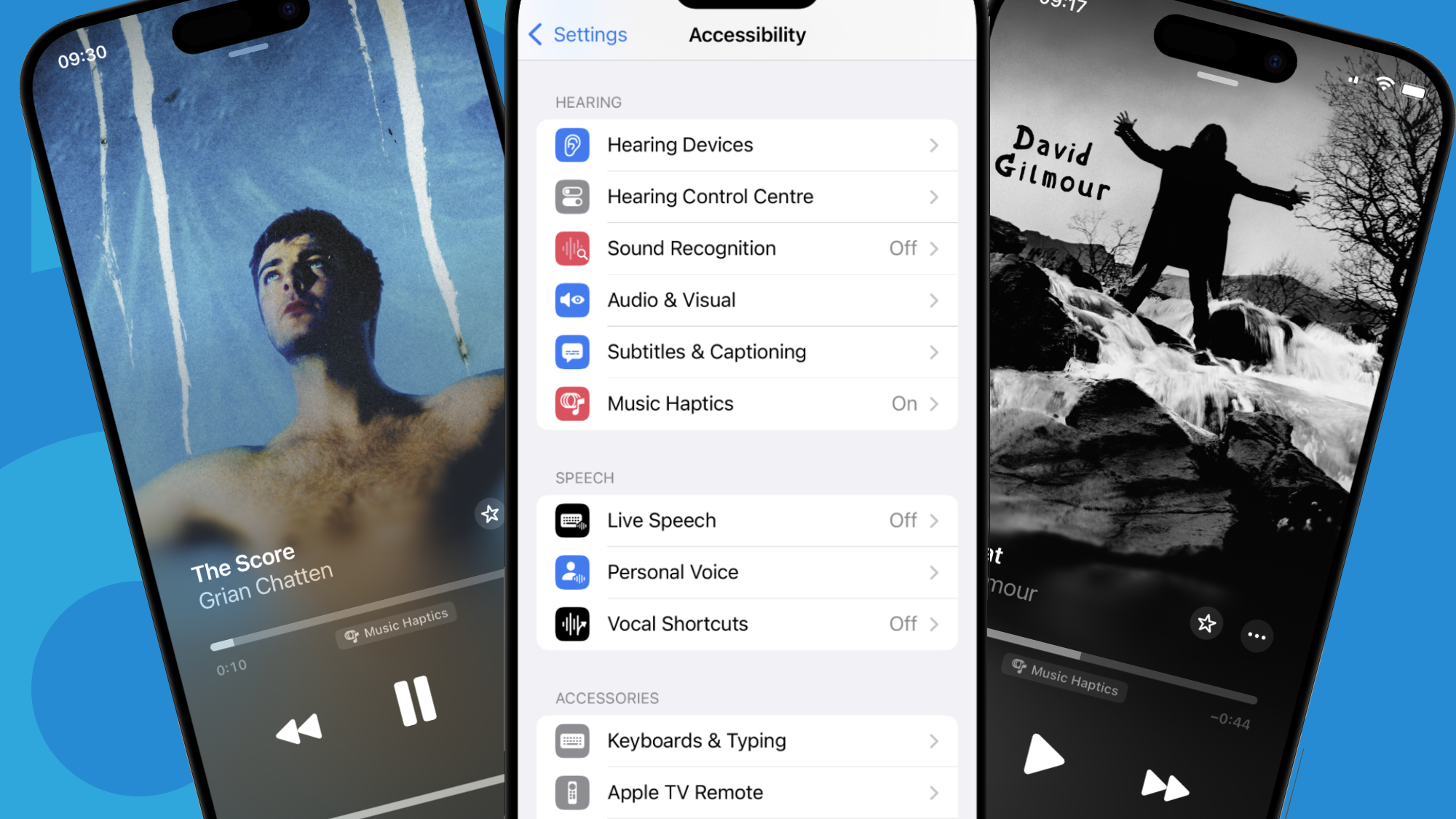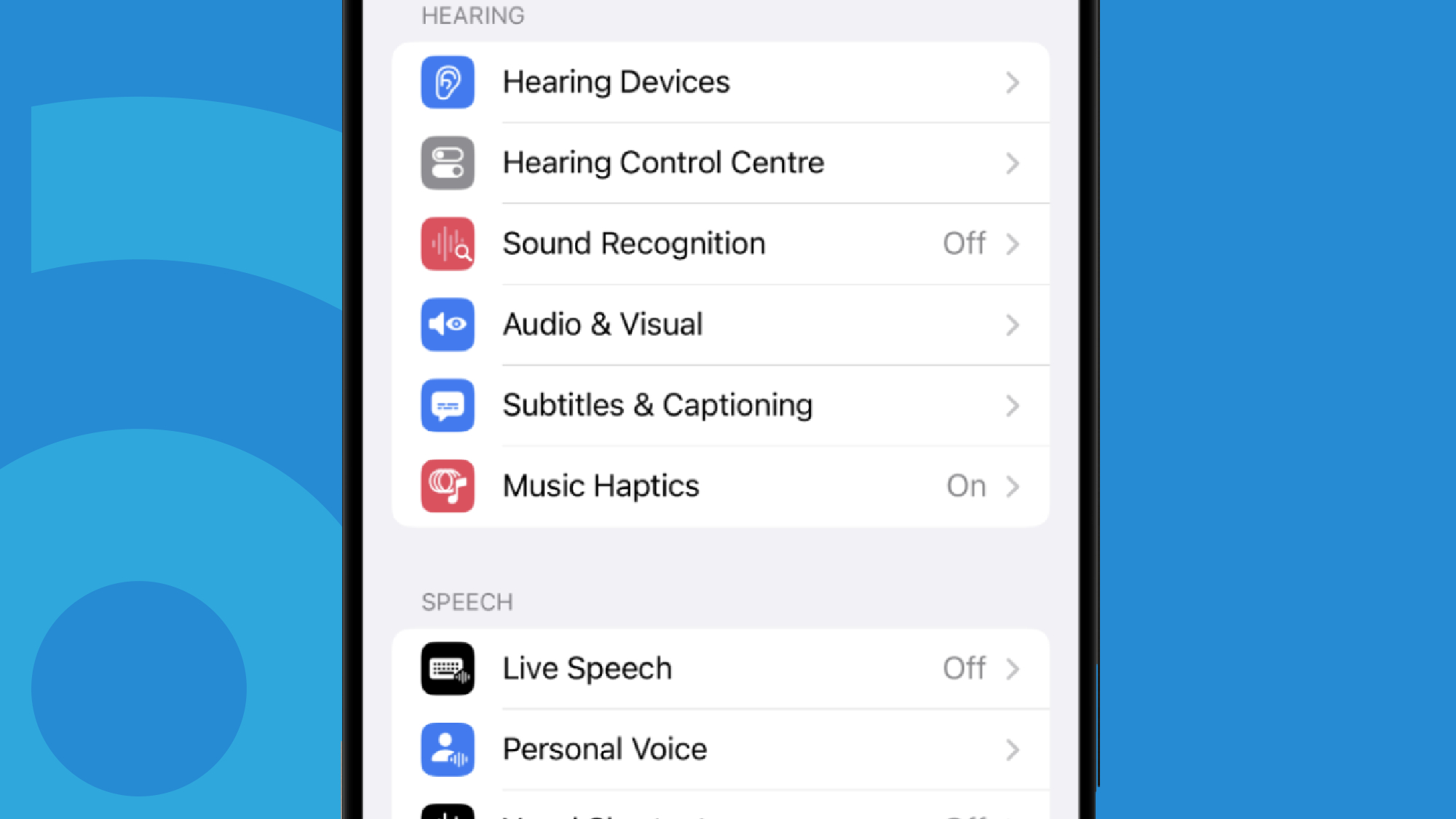Why you need to try Apple Music Haptics even if you’re not hard of hearing
For me, it leaves Sony’s heritage Xperia haptics for dust

I don't have hearing loss (yet), but Apple's introduction of Apple Music Haptics, which lets you feel certain frequencies instead of hearing them, in iOS 18 is really, really good.
In fact, the recent rollout of Apple Music Haptics (part of a slew of Accessibility features the Cupertino giant recently unveiled) is so detailed and nuanced that while I still love the 3.5mm headphone-jack-toting Sony Xperia 1 V for sound, I think your iPhone with iOS 18 just trounced it for music you can feel.
The center of iPhone's brilliance? The new iPhone Taptic Engine, but do note that Music Haptics is only supported on iPhone 12 and later, excluding iPhone SE (3rd generation) running iOS 18 – I'm using it on an iPhone 12 Pro.
Let's not forget, Sony's been putting vibrations and haptics in its phones since 2014 with the Sony Xperia Z2, but I have to say that this is a different ball game. I'll get to the differences in a minute, but right now you want to know how to get it don't you? Allow me…
How to get Apple Music Haptics on iPhone

It's easy I promise!
- Make sure you're running iOS 18, have an Apple Music subscription and a supported iPhone (see above, but it's essentially iPhone 12 or later)
- Head to Settings > Accessibility (it's below General) > Music Haptics
- Click to toggle Music Haptics 'on' (you can even hear a sample)
- Head over to Apple Music, select a track and you'll see the Music Haptics icon in the Now Playing screen, which you can tap to pause
- Music Haptics works with Apple Music, Apple Music Classical, Shazam and supported third-party apps when your iPhone's connected to Wi-Fi or cellular networks
Come on, feel the noise
The concept of feeling frequencies in music is not new. I've written an in-depth explainer on it using Sonic Lamb's vibrating headphones, but essentially, humans – even those lucky enough to have no hearing loss – don't just hear through our ears. We also feel low-level sound through our bodies, because the lowest frequency the human ear can detect is 20Hz. Thus, we have always felt sub-bass and bass frequencies rather than heard them (think thunder, rumbles in jungles and so on).
Loudspeaker manufacturers point us towards dedicated subwoofers to recreate that rumble. So, even the best over-ear headphones struggle here, because they typically use a single driver of about 40mm on each side of our head. Now, imagine what the limits on what the tiny speaker in your phone can achieve. This is where Music Haptics comes in.
Get daily insight, inspiration and deals in your inbox
Sign up for breaking news, reviews, opinion, top tech deals, and more.
Once deployed, I'm struck by the nuance here – the various intensities of taps throughout the pensive, opening keys alongside David Gilmour's guitar in Black Cat; the refined vibrations and gentle buzzes to accentuate the Spanish guitar and building vocal in Grian Chatten's The Score.
Sometimes haptic enhancements can feel one-note – there's a buzz to keep a beat, but little else. This is very different. While it isn't quite like going from monochrome to technicolor, it's a vast improvement.
The crucial thing for me is that it still works when sending the Apple Music track from your iPhone to some of the best wireless earbuds or your favorite Bluetooth speaker. Once you've been holding your phone for a little while, noting that your music is being presented with an added sensory dimension (touch), it's an enhanced experience even for those without hearing loss.
For those who are hard of hearing, the addition of Music Haptics on their iPhone might mean far greater enjoyment of a shared track at a party, listened at normal levels. I think it's an addition Apple should be very proud of.
Quick tip: don't leave Music Haptics on with your iPhone resting on a shared desk, so that you can type (while wearing AirPods). My colleague says it's "like trying to get to sleep if there's a party next door – but a good party".
You may also like
- Want to nix noise? See our pick of the best noise-cancelling earbuds
- The Apple Intelligence launch is a mess – don’t buy the iPhone 16 or install iOS 18 based on the promise of what’s to come
- Having a party? Consult our roundup of the best Bluetooth speakers

Becky became Audio Editor at TechRadar in 2024, but joined the team in 2022 as Senior Staff Writer, focusing on all things hi-fi. Before this, she spent three years at What Hi-Fi? testing and reviewing everything from wallet-friendly wireless earbuds to huge high-end sound systems. Prior to gaining her MA in Journalism in 2018, Becky freelanced as an arts critic alongside a 22-year career as a professional dancer and aerialist – any love of dance starts with a love of music. Becky has previously contributed to Stuff, FourFourTwo and The Stage. When not writing, she can still be found throwing shapes in a dance studio, these days with varying degrees of success.